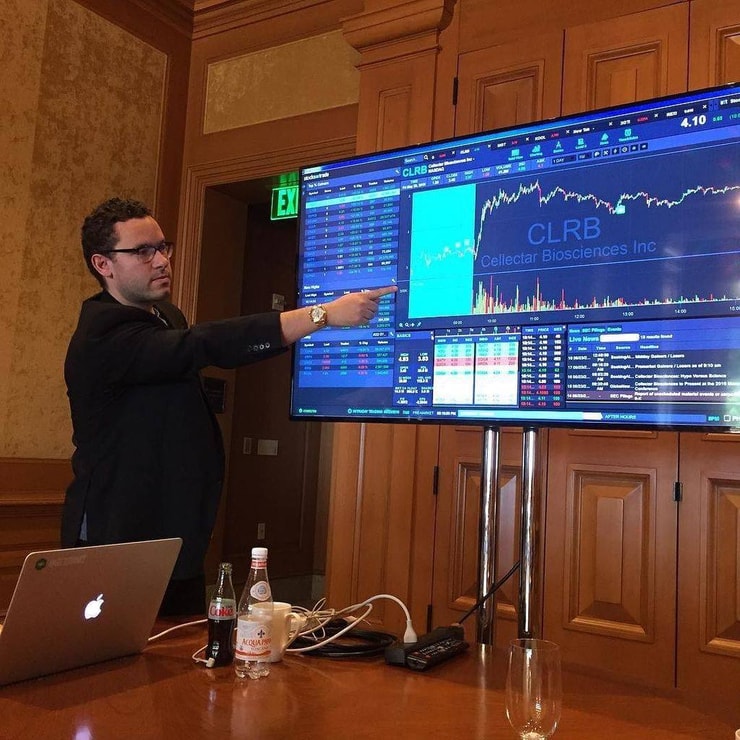Some of the best setups right now are during premarket trading hours.
This can be confusing for new traders, but don’t worry. The process is much simpler than it seems.
That’s the way most things are in the stock market. Things are almost meant to be confusing … That’s how Wall Street wins.
Theoretically, if you don’t know how to trade premarket, you’ll give your money to a Wall Street executive who’ll make money for both of you. They take a cut.
I’m here to pull back the veil!
It’s important for traders to understand premarket AND after hours opportunities because these time frames might line up with their schedule better.
- Premarket hours are between 4 A.M. and 9:30 A.M. Eastern.
- Normal trading hours are between 9:30 A.M. and 4 P.M. Eastern.
- After hours are between 4 P.M. and 8 P.M. Eastern.
There’s an example of all three time frames on the Avalo Therapeutics Inc. (NASDAQ: AVTX) chart below, this was a 620% spike:

On the chart above you can see the price immediately reacts to news that was announced at the beginning of after hours on March 27 …
We can’t control when these companies will announce news. As a result, there are often trade opportunities throughout the day. Pick a trading time that works for you.
I snagged a premarket profit yesterday.
Here’s How:

I’m using the same process to trade every time I approach the market.
This isn’t rocket science, I’m not some kind of math genius. I just know how to follow the rules.
And yes, I can teach you this process.
I’ve already helped more than 30 students cross the $1 million trading milestone. And there are more on the way.
Take a look at my recent Tweet below:
Sooooo many solid plays like $CGC $ACB $TBCP $CADL and sooooooo many awesome https://t.co/occ8wKmT5U students to congratulate and learn from too…REMEMBER SMALL GAINS ADD UP OVER TIME! And give one extra-special congratulations to SuzyQ in challenge chat as today she just passed…
— Timothy Sykes (@timothysykes) April 4, 2024
Luckily, you made it just in time.
There are a lot of trade opportunities right now because the market is hot. And it’s about to get hotter … Learn about the $2 trillion catalyst about to hit the market.
Three out of four stocks follow the market. That means, when the bulls are in charge, there are more profit opportunities for small-account traders like you and me.
Like my profit on TC BioPharm (Holdings) plc (NASDAQ: TCBP) from yesterday morning. There are always stocks like TCBP spiking, but the larger bull market helped push TCBP 150% higher before noon!
And when a stock moves like that, I have more room for error as a trader. Out of the 150% available, I snagged 11%.
My trade notes are below, I had a starting stake of $9,090:

Small Gains Add Up

Had I played the entire move …This is completely hypothetical and I would never be so rash, but let’s do the numbers.
With my starting stake, I could have profited more than $13,000. In a single day.
But there’s NO WAY I would catch the entire move. Even attempting to do that would be incredibly risky. We have to focus on the most predictable part of the setup. Then we make the trade and move to the next spike.
It’s not about how much you make. It’s about how much you keep. Don’t swing for the fences. That’s how traders get burned.
Instead, focus on my trading process:
I use simple technical indicators like support and resistance to trade the best setups. On the chart below you can see where I bought and sold shares of TCBP.
Notice …
- The news catalyst.
- Consolidation above a key support level.
- My buy after confirmation of support.
- My sell into strength.

Obviously I sold too soon.
But remember, I’m not trying to swing for the fences. I’m trying to keep my account safe while growing it incrementally over time. In more than 20 years of trading I’ve made +8,000 trades. I profited on 76% of those trades.
Here’s my profit chart over the same time period:

More Breaking News
- Is the Spike in Service Properties Trust Stock a Buy Signal or a Red Flag?
- Darden’s Share Roll: Earnings and Price Targets Stir Market
- SoundHound AI Faces Tides of Change: What Causes Recent Price Shifts?
Small gains add up.
Premarket & After Hour Intricacies

Most all available brokers will offer premarket and after hours trading. But it doesn’t hurt to check …
Technically, this trading doesn’t happen on exchanges like the Nasdaq or the NYSE. Instead brokers connect with electronic communication networks (ECNs).
From our point of view, the process is almost identical.
One point to note … We can’t use market orders during premarket or after hours trading. We have to use limit orders due to the ECNs. But if you’re familiar with my process you should know that we ALWAYS use limit orders NO MATTER WHAT. So this shouldn’t be an issue for you.
But due to the use of specific ECNs, there’s less liquidity in premarket moves and the price action can move more quickly. So make sure you’re trading with a plan!
Timing is everything in the market. And those who prepare beforehand are most prepared to profit.
StocksToTrade has seamless broker integration with real-time data to ensure speedy order executions. That’s how I link my brokerage account to the market.
And it’s where the charts in this blog post came from.
>> Try a 14-day trial of StocksToTrade for just $7! <<
Pick a trading time frame that works for your schedule and hit the ground running.
There’s a new profit opportunity every day in this 2024 market.
Cheers.

Leave a reply